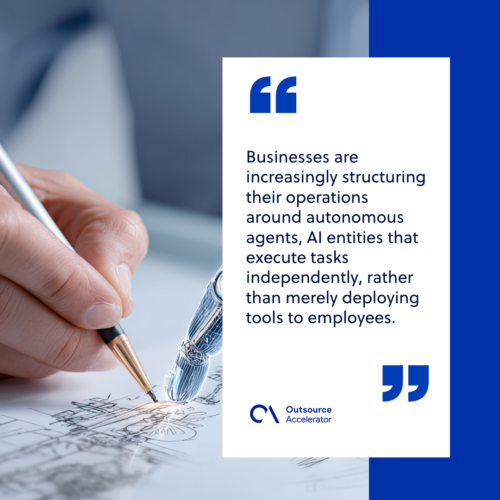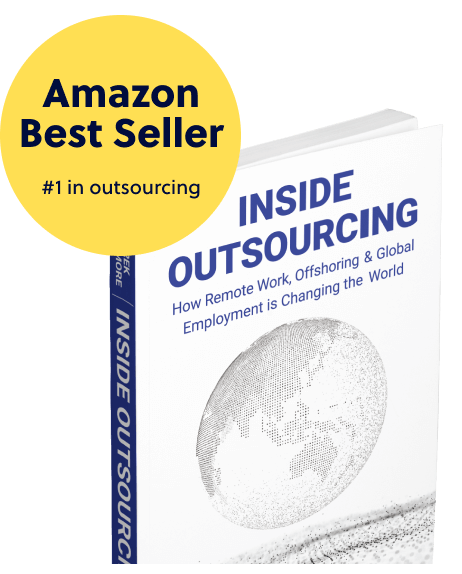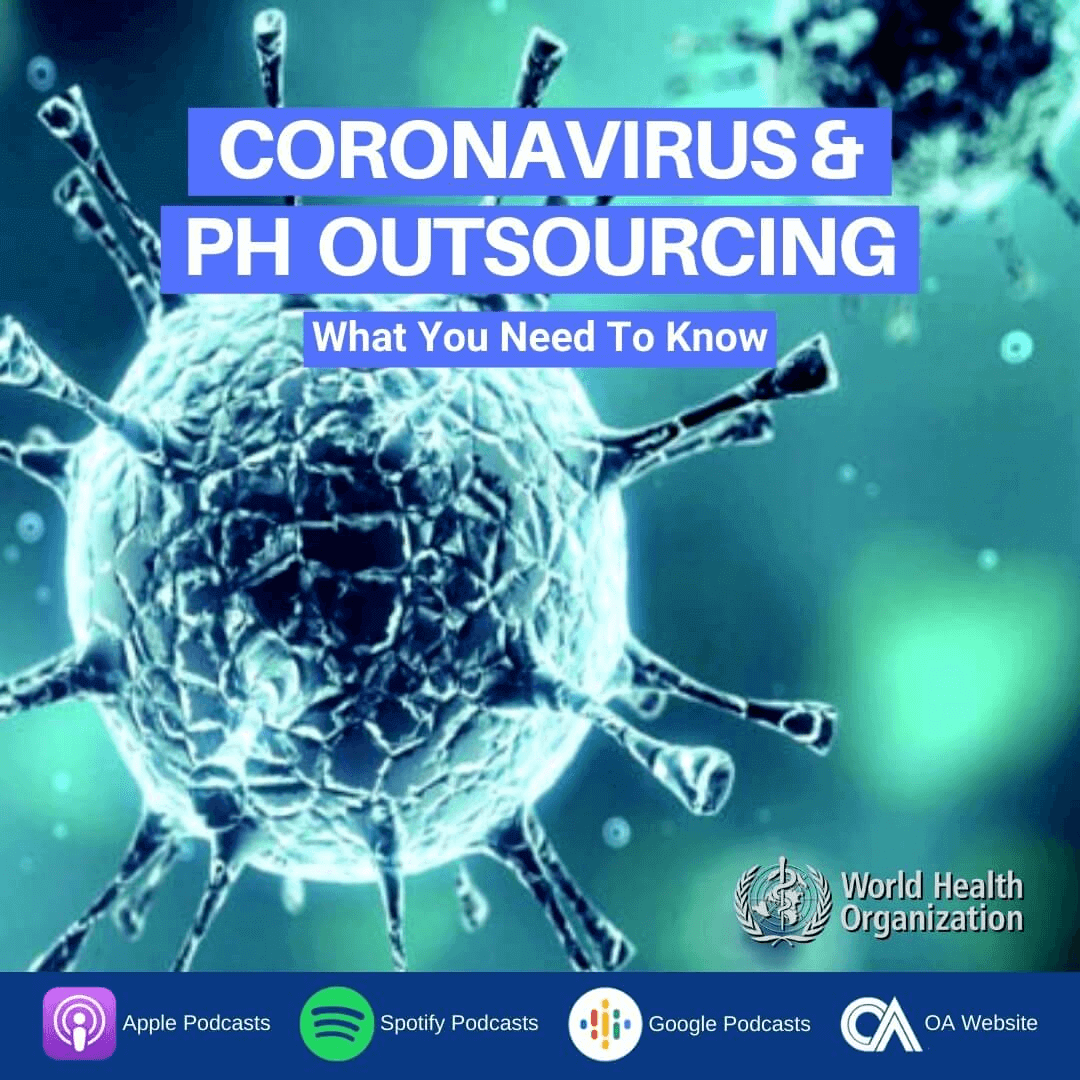8 AI workflow automation trends for 2026

Artificial intelligence (AI) now powers everything from customer‑service chatbots to predictive maintenance systems, and the financial stakes have never been higher.
According to Statista, the AI technology market is projected to reach approximately $244 billion in 2025 and surge past $800 billion by 2030. Despite these vast numbers, AI functions best when it complements, rather than replaces, human teams, underscoring the importance of collaborative intelligence in real-world workflows.
This balance becomes especially relevant in the context of AI workflow optimization, where machines handle repetitive tasks and humans guide strategy, oversight, and decision‑making.
This article highlights eight AI workflow automation trends for 2026. We’ll identify emerging capabilities, primary business implications, and practical ways companies can prepare for the near future.
How AI workflow automation works
Businesses face mounting pressure to operate more efficiently and effectively. AI workflow handles repetitive tasks while complementing human decision-making, allowing teams to focus on strategic priorities.

Knowing the following mechanics can help organizations implement automation effectively and maximize its benefits:
Task identification and data input
AI systems first identify repetitive or rule-based tasks that can be automated. These tasks often involve structured data, such as invoices, emails, or customer requests.
The system collects and organizes input data, creating a foundation for accurate processing.
Process mapping and automation design
Next, businesses map workflows to determine which steps AI can execute independently and where human intervention is required. Automation rules are defined, and AI models are trained to follow these rules while learning patterns over time.
Machine learning and decision-making
AI algorithms analyze historical data to recognize patterns, make predictions, and suggest actions. For example, an AI system can prioritize customer support tickets based on urgency or automatically flag anomalies in financial records.
Integration with existing systems
AI workflow automation connects with enterprise software, CRMs, and databases to perform tasks without manual intervention. This integration allows seamless data flow across departments, reducing bottlenecks and improving accuracy.
Monitoring and continuous improvement
Even after deployment, AI continues to monitor outcomes and adapt to changes. Human teams review performance, refine rules, and retrain models as needed, creating a feedback loop that enhances efficiency over time.
AI workflow automation revolutionizes how organizations manage operations, enabling teams to concentrate on strategy, innovation, and higher-value tasks.
8 AI workflow automation trends that will dominate in 2026
Businesses are embracing AI workflow automation at a faster rate than ever, transforming the way work gets done across various industries.
In 2026, these trends will define the next generation of AI-driven operations, blending human oversight with intelligent systems to boost efficiency, decision-making, and innovation:
1. Embedded AI in everyday business software
AI capabilities are increasingly integrated directly into tools that employees use daily, such as CRMs, project management platforms, and ERP systems.
Instead of relying on separate AI platforms, businesses gain real-time insights, predictive analytics, and automated recommendations inside familiar interfaces. This integration reduces friction and accelerates adoption, allowing teams to act on data without switching contexts.
2. Workflow automation moves to AI‑led orchestration
Traditional automation focuses on predefined rules, but AI-led orchestration allows systems to make real-time decisions across multiple processes.
For example, AI can dynamically route customer requests to the most suitable team member or adjust supply chain priorities based on predicted demand. It shifts workflows from static pipelines to adaptive, intelligent networks.
3. New AI‑driven roles and cross‑functional teams
Companies are creating positions such as AI workflow coordinators, automation architects, and data quality managers to bridge the gap between human and machine work.
Cross-functional teams now collaborate to define automation strategies, monitor outcomes, and refine models. Organizations that cultivate these roles gain agility and improve alignment between AI initiatives and business objectives.
4. Organizations built around agents, not just people + tools
Businesses are increasingly structuring their operations around autonomous agents, AI entities that execute tasks independently, rather than merely deploying tools to employees.
Agents can handle specialized workflows, make decisions, and coordinate with other agents, freeing human teams to focus on strategic or creative tasks.

5. Multimodal orchestration
AI systems are no longer limited to one data type. In 2026, workflows will integrate text, voice, image, and structured data simultaneously.
For instance, an AI agent can process a spoken customer request, extract relevant documents, and automatically update a database, creating seamless experiences across channels.
6. Closed-loop automation with continuous learning and observability
Closed-loop automation establishes a continuous cycle where execution, monitoring, received feedback, and subsequent model updates are all interconnected. AI systems learn from outcomes, adapt processes, and adjust predictions in near real-time.
Continuous observability enables teams to track performance, identify anomalies, and refine rules, thereby creating a self-improving ecosystem that becomes smarter over time.
7. Responsible automation
As artificial intelligence assumes higher-stakes workflow control, governance, explainability, and compliance become critical. Businesses must strike a balance between autonomy and oversight, protect sensitive data, mitigate algorithmic bias, and comply with relevant regulations.
Transparent AI builds trust with employees, customers, and regulators while enabling ethical decision-making.
8. Hyper-personalized automation
AI will tailor workflows to the individual needs of employees and customers, dynamically adjusting processes to achieve optimal outcomes.
For one, marketing automation can craft messages based on user behavior, while internal workflows can prioritize tasks based on employee skills and workload.
Personalization boosts engagement, satisfaction, and productivity while maintaining consistency at scale.
Organizations that adopt these strategies will not only improve efficiency but also empower human teams to focus on high-value work. These trends create a balance between technology and human insight.
Transform your workflows with Monday.com’s work management platform
monday.com’s work management platform enables teams to bring strategies to life by connecting daily tasks to broader business goals. It aligns departments in a single workspace, fostering collaboration and clarity across projects through these features:
- Teams can standardize workflows, assign ownership, and execute tasks with speed and precision.
- Real-time insights help identify potential risks, track progress, and make informed decisions without relying on guesswork.
- AI-driven capabilities categorize project requests, flag potential challenges, and suggest detailed project plans, providing teams with a proactive edge.
Transform how work gets done, improve efficiency, and drive results across the organization. Visit monday.com’s official website to explore its full capabilities and take the first step toward smarter, more connected enterprise work management!







 Independent
Independent




